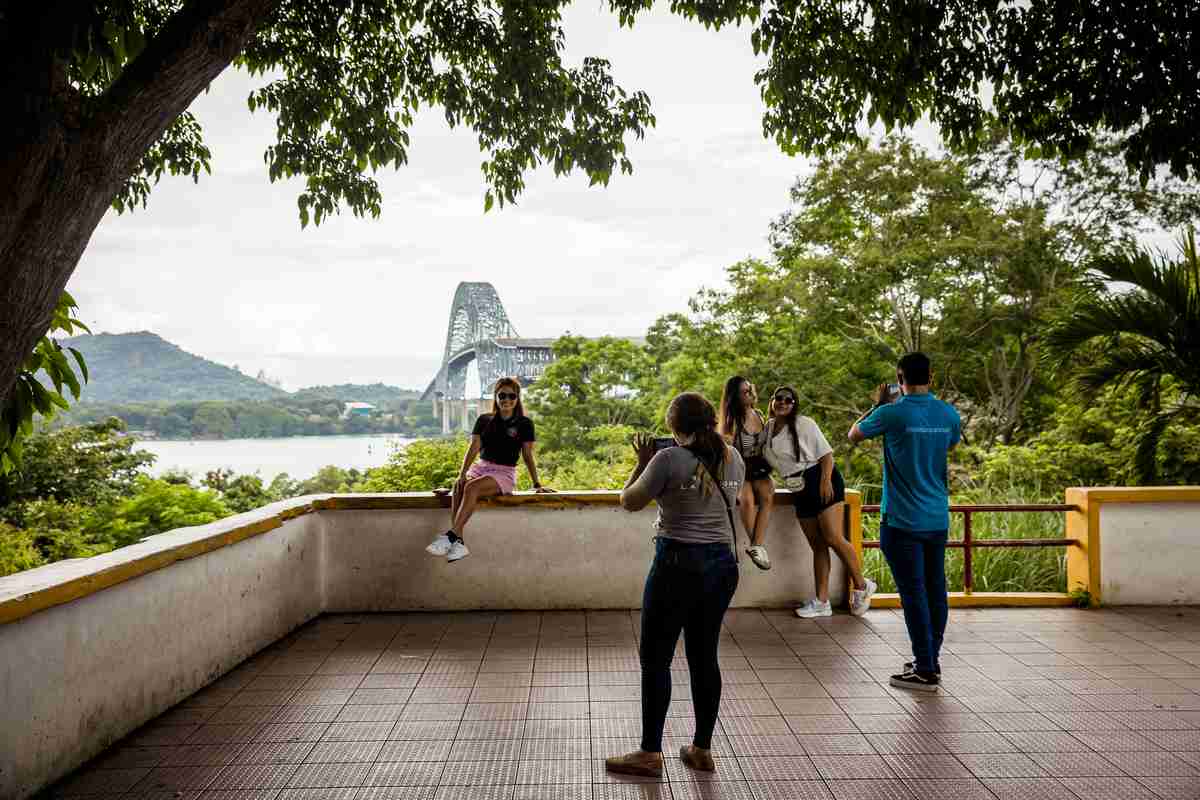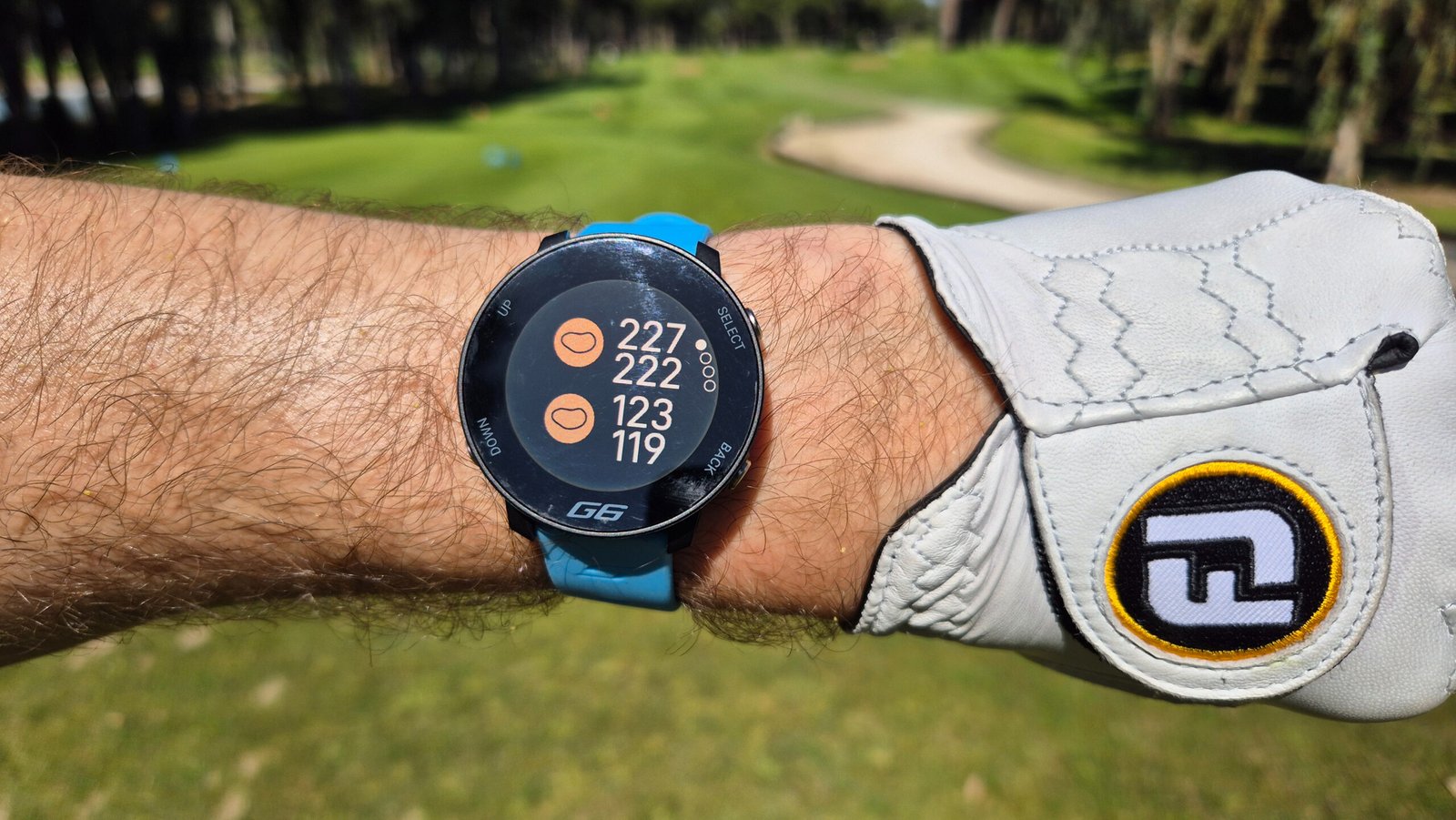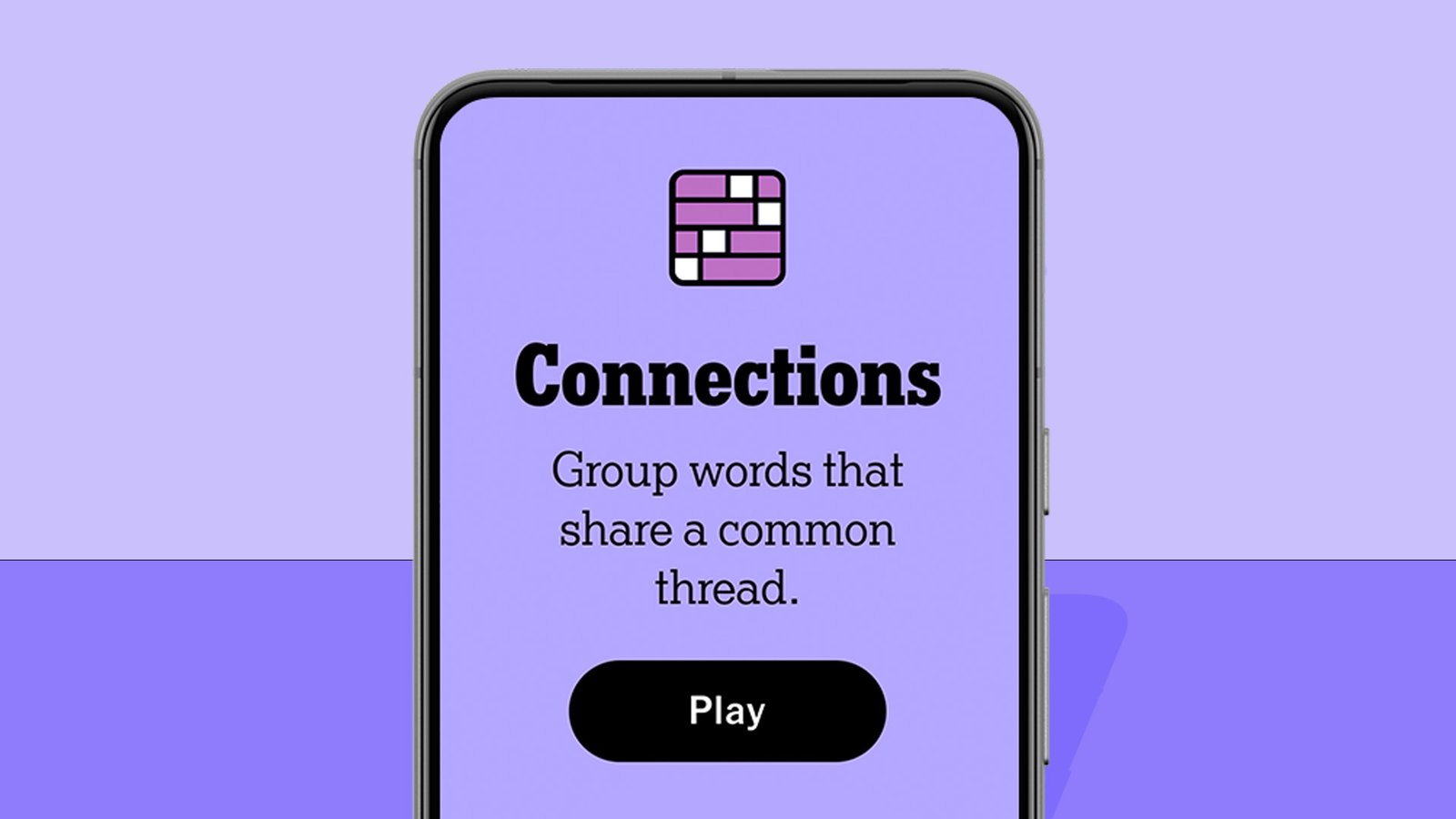
Tourists take photos at the Mirador de las Américas in Arraiján, Panama, in July.
12:57 JST, August 10, 2025
The bright red arch, guarded by stone lions and painted dragons, was built in 2004 to honor Panama’s large and long-standing ethnic Chinese community. The small park, called the Mirador de las Américas, offers a panoramic view of the continent-connecting Bridge of the Americas and the w
ARRAIJÁN, Panama – In the mounting fight between the United States and China for influence over the Panama Canal, the newest battleground stands by the side of a highway here, crumbling behind orange tape.
aterway below.
But two decades later, pieces of the arch and a nearby obelisk have broken off – and some here are now saying the site should be demolished entirely.
“It’s painful to see it in such bad shape,” said Carlos Ng, vice president of the Chinese Association of Panama, surveying the damage on a steamy recent afternoon. “People think it’s abandoned.”
Amid the escalating duel between the United States and China over the canal – through which 40 percent of U.S. container traffic travels – the overlook has become a potent symbol of Panama’s tilt toward Washington.
President Donald Trump has repeatedly claimed China runs the waterway, and he’s vowed to take it back, by force if necessary – rhetoric that evokes uncomfortable memories here of the 1989 U.S. invasion.
In response, Panamanian leaders here have taken several steps away from Beijing. They let the U.S. take down Huawei telecommunications towers and pulled out of the Belt and Road Initiative, China’s signature foreign infrastructure program. They audited the Hong Kong-based company that runs ports at each end of the canal and moved late last month to scrap its contracts for those facilities.
For many Chinese Panamanians, then, it is no coincidence that the mayor of Arraiján has refused to let Chinese leaders renovate the overlook, answer their repeated messages or address the topic at all.
“What’s happening with the overlook is what’s happening in Panama at a global level,” said Juan Tam, a former canal employee whose parents arrived by steamship from China in the 1910s.
Panamanian President José Raúl Mulino, pressed on the overlook at a news conference, rejected the idea that the site was falling victim to broader geopolitics. Its future, he said, is a purely local issue.
Then he called the U.S. Panama’s “number-one strategic and multifaceted partner.”
“We have a relationship with China,” Mulino said. “But our top … commercial, security, tourism and national partner is and will be the United States of America.”
To Tam, that answer was telling. Panama has broken so sharply from China, he said, that not even a monument honoring his community has been spared.
“It’s as if you need to find medicine,” Tam said. “But the mayor doesn’t want anything to do with finding medicine. The national government doesn’t want anything to do with finding it, either. And the U.S. doesn’t think anyone’s sick to begin with.”
An immigrant community blossoms
It was the canal that helped bring the Chinese to Panama.
The first immigrants arrived in the 1850s as laborers in a French effort to build a railroad and then a canal across the isthmus. When the U.S. bought the railway and took over the canal effort, those Chinese workers opened stores along the route to sell basic goods to others doing the digging.
These merchants brought family over from China, and over the next century the population grew into the largest Chinese community in Central America, historian Berta Alicia Chen said. Soon Panama City’s cobblestoned historical center sprouted a Barrio Chino – a Chinatown.
Now, between 5 to 10 percent of all Panamanians are believed to have some Chinese ancestry. Shop windows in the newer enclave of El Dorado display Panamanian flags alongside red paper lanterns; food vendors hawk chow mein with plantains on the side. Dim sum has grown so popular that it has yielded a saying: “There’s no breakfast more Panamanian than a Chinese breakfast.”
The Mirador de las Américas was built to mark the community’s 150th anniversary in Panama. A Chinese Panamanian group raised funds to construct the overlook in Arraiján, across from Panama City at the canal’s Pacific end.
The two countries soon grew closer. In 2017, Panama cut diplomatic ties with Taiwan and became the first country in Latin America to join the Belt and Road Initiative, Chinese leader Xi Jinping’s program to develop infrastructure abroad and expand Beijing’s influence.
A Chinese firm was awarded a $1.4 billion contract to build a fourth bridge across the canal, and trade between the countries grew exponentially. Today, China is Panama’s top export market, and only the U.S. sells more goods to Panama than China.
Stepping away from China
Trump, in his inaugural address, claimed that Beijing was operating the waterway to the detriment of U.S. ships.
“We didn’t give it to China,” he said. “We gave it to Panama, and we’re taking it back.”
But Jaime Troyano is adamant: Panama controls its canal.
“Everyone gets treated the same. It’s neutral – that’s how we’ve managed the canal since 1914,” said Troyano, a historian for the Panama Canal Authority. “The only people who pass here for free are the crocodiles.”
The U.S. completed the canal in 1914 and controlled it until 1999, when it turned the waterway over to Panama. The Hong Kong-based conglomerate CK Hutchison has operated two of the largest ports at either end of the canal, but neither facility controls access to the channel in between. (The other three ports are managed by companies from Singapore, Taiwan and the United States.)
Mulino, Panama’s pro-U.S. president, accused Trump of lying about reclaiming the canal. Washington soon ramped up the pressure.
Secretary of State Marco Rubio, visiting Panama City in February on his first overseas trip, threatened the U.S. would take “measures necessary to protect its rights” unless Panama reduced Chinese influence on the canal. The next day, Mulino said Panama would be pulling out of the Belt and Road Initiative.
Defense Secretary Pete Hegseth signed a deal in April that allows U.S. forces to return to three largely vacant training facilities near the canal – he said it would keep Panama from “capitulating to coercion” by China. In June, the U.S. Embassy said it would be helping Panamanian officials take down the Huawei towers, thus replacing “the malign influence of China” with $8 million in “secure American technology.”
And late last month, Panama’s comptroller general sued to nullify Hutchison’s port contracts, citing “many irregularities” found in the audit.
“Talk about a malign influence, not just from a security perspective, from an economic perspective as well,” Kevin Marino Cabrera, the U.S. ambassador here, told The Washington Post. “That’s money that belongs to the people of Panama.”
Parsifal D’Sola, who leads the Andrés Bello Foundation’s center on Latin American-Chinese relations, said that Mulino had asserted the country’s sovereignty but in practice made moves that appeared to be meeting Trump’s demands.
“Actions speak louder than words, and those actions indicate that the pressure has worked,” D’Sola said. “The government has been willing to accede.”
With one exception: Trump has accused Panama of charging U.S. ships and firms higher fees to transit the canal – a claim the canal authority denies – and demanded they be lowered.
In the 1977 treaties that eventually gave Panama control of the canal, the countries agreed the waterway would remain “permanently neutral,” with equal tolls for all. Canal authorities have thus insisted they cannot remove fees for U.S. naval ships, an advantage Hegseth claimed he had been able to secure.
“Anything they can do that looks like they’re throwing a Scooby snack to the Trump administration, they’re going to do,” said John Feeley, a former U.S. ambassador here. “The problem is that the Scooby snack Trump wants is … the one thing they can’t throw at him.”
A monument in the mix?
Eloy Chong, mayor of a bedroom community outside Panama City, is frustrated by his adopted country’s pivot away from his native land.
Chong, a naturalized citizen who immigrated here four decades ago, said Panama needs investment from China and the U.S. alike to benefit cities such as his own.
Panama’s shift from China, he said, has already had economic consequences. A Chinese company he was courting to build a pineapple plantation abandoned the plan for a site in Brazil.
“There’s a difference between people, business and government,” he said. “But the line is blurring.”
In late January, Arraiján Mayor Stefany Peñalba posted renderings of the canal overlook on Instagram showing the park without the arch or obelisk. “We are rescuing public spaces to promote culture, tourism, the economy and business,” she wrote.
The Chinese Association of Panama, whose group first donated the obelisk, wrote to Peñalba a few weeks later with concerns, Ng said. A 20-year concession for the monument expired in 2024, but the group had raised money for renovations and repairs. It just needed approval from the municipality.
Ng said the group never heard back.
Arraiján officials declined multiple requests for an interview with Peñalba. They did not respond to questions asking why she hadn’t renewed the concession for the monument or engaged with Chinese Panamanian leaders.
But after Mulino’s comments on the topic, Peñalba reposted a video of his answer on Instagram, writing: “Well said, president.”
Ng doesn’t believe the monument has much to do with Panama’s shift away from China. He said his community deserves to have its history celebrated like any other ethnic group. “What we don’t have to mix is culture and politics,” Ng added.
Xu Xueyuan, China’s ambassador, raised it at a recent dinner marking the eighth anniversary of diplomatic relations between China and Panama. She called it a “tribute to the Chinese contributions to the country,” according to a copy of her remarks, and said “no effort to demolish it or move it must be allowed.”
Cabrera, the U.S. ambassador, said he had not discussed the overlook with Panamanian officials and was focused on Beijing, not on Panamanians of Chinese descent. “Maybe it gets blended or what have you,” he said. But “when we talk about the malign influence, it’s the Chinese Communist Party.”
Patsy Lee, a delegate to the National Assembly who is Chinese Panamanian, drives past the arch and overlook on her commute. She said it reminds her of her great-grandparents, who moved from China to the Atlantic port of Colón.
Lee said Panama should nurture ties with both the U.S. and China and avoid moves that put its Chinese community in the middle simply to appease Trump.
Fixing up the monument, she said, would be an easy start.




